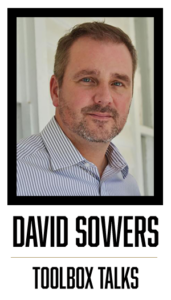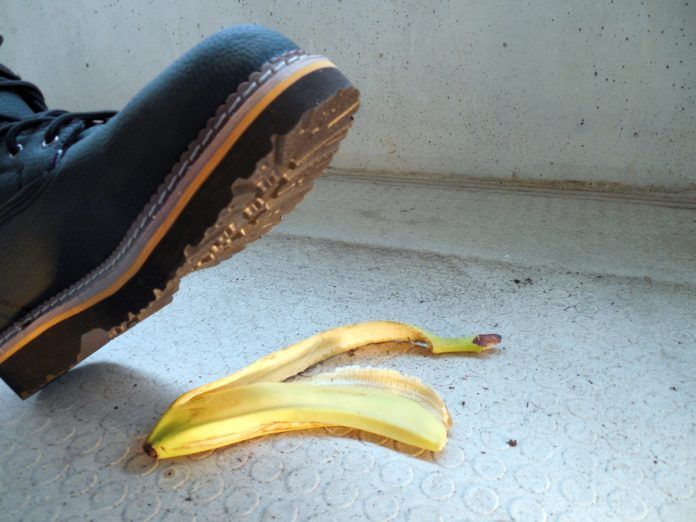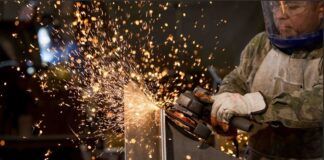During a recent conversation, my friend Charlie mentioned he was in a meeting where someone said, “We should treat all near-misses like we had an actual accident.” This statement was not well received by the group.
 This was a little puzzling to me. In my mind, treating a near-miss like an accident was a good thing. Why wouldn’t you treat a near-miss with the same kind of urgency and careful consideration to get all the learning? I told Charlie I thought the guy was right and he challenged me to explain my assertion.
This was a little puzzling to me. In my mind, treating a near-miss like an accident was a good thing. Why wouldn’t you treat a near-miss with the same kind of urgency and careful consideration to get all the learning? I told Charlie I thought the guy was right and he challenged me to explain my assertion.
I said, “OK. Let’s imagine we had a fatality where someone was hit on the head by a heavy wrench falling off a piece of scaffolding. What are some of the things we would say about it? What could we learn? We would probably say, ‘Well, the scaffolding didn’t have any toe boards or netting to prevent items from sliding off. The person working at heights didn’t use a lanyard on their tools. We weren’t removing tools from the scaffolding when they were no longer needed, causing clutter and additional risks of falling objects. We didn’t set up any exclusion areas underneath the scaffolding to prevent people from walking under it while work was happening. The injured worker was underneath the scaffolding where the risk of falling objects was greater. The injured worker wasn’t wearing a hardhat.’ These are some of the gaps or breakdowns we could address, post-accident.”
“Let’s take that same scenario, except now we are going to let that person take a giant step to the left, allowing the wrench to fall harmlessly to the ground next to the worker. What are some of the things we would say about this near-miss? What could we learn? We could say ‘Well, the scaffolding didn’t have any toe boards or netting to prevent items from sliding off. The person working at heights didn’t use a lanyard on their tools. We weren’t removing tools from the scaffolding when they were no longer needed, causing clutter and additional risks of falling objects. We didn’t set up any exclusion areas underneath the scaffolding to prevent people from walking under it while work was happening. The nearly-injured worker was underneath the scaffolding where the risk of falling objects was greater. The nearly-injured worker wasn’t wearing a hardhat.’ It’s all the same learning without the need to have an injury or fatality to get it.”
Charlie liked this explanation and said he wanted to circle back around to the group and share it to help them better understand what the guy meant when he said, “We should treat all near-misses like we had an actual accident.” But then he made an interesting point I had never considered. Charlie said, “I think the group didn’t it take this way. I think they reacted negatively because they were thinking of all the painful stuff after an accident. They were thinking, ‘We’re supposed to treat a near-miss like an accident? We’re going to have meetings and committees? We’re going to do a series of painful interviews? We’re going to fill out a bunch of paperwork and write a ton of reports? We’re going to get attention from corporate safety or OSHA? We’re going to stop work and have a safety stand-down? Worst of all, we’re going to assign blame and fire people or give them days off? No thanks.’”
So to address the question in the title, “Should we treat a near-miss like an accident?”, The answer is “yes, but no.”
Yes, treat a near-miss like an accident to ensure you squeeze all the same learning you can out of the event.
But no, don’t put the squeeze on your employees by making the near-miss a painful experience.
The idea is to gain information so the organization can improve. The way to get this information is to make the process easy, valuable, and painless. If near-miss reporting is a painful and arduous experience, guess how much near-miss reporting you will get?
Toolbox Talks offers quick insights and thoughts to use for your toolbox (tailboard) talks. Dave Sowers is a founding member of Knowledge Vine, a veteran-owned human performance training and consulting organization that strives to reduce the frequency and severity of human errors in the workplace. He has almost 30 years of experience in power generation and the utility industry. He is a veteran of U.S. Navy Nuclear Power Program and holds a bachelor’s degree in resources management and a master’s degree in both management and emergency management and homeland security.



